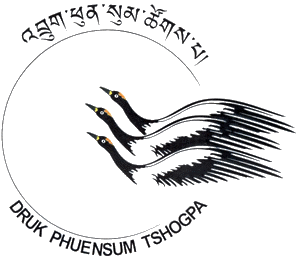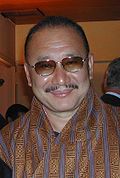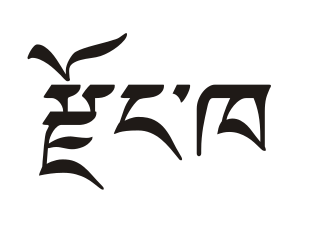
LyonpoKhandu Wangchuk is a political figure in Bhutan. He graduated from St. Stephen's College, University of Delhi. He was Chairman of the Council from 2001 until 2002. On 7 September 2006, he became Prime Minister again; he was then replaced by Kinzang Dorji on 2 August 2007, after Wangchuk resigned to participate in the 2008 election as a member of the Druk Phuensum Tshogpa (DPT) political party. He also served as Minister of Foreign Affairs from 2003 to 2007.
The development of Bhutanese democracy has been marked by the active encouragement and participation of reigning Bhutanese monarchs since the 1950s, beginning with legal reforms such as the abolition of slavery, and culminating in the enactment of Bhutan's Constitution. The first democratic elections in Bhutan began in 2007, and all levels of government had been democratically elected by 2011. These elections included Bhutan's first ever partisan National Assembly election. Democratization in Bhutan has been marred somewhat by the intervening large-scale expulsion and flight of Bhutanese refugees during the 1990s; the subject remains somewhat taboo in Bhutanese politics.

The National Assembly is the elected lower house of Bhutan's new bicameral Parliament which also comprises the Druk Gyalpo and the National Council. It is the more powerful house.

The Bhutanese local government elections of 2011 were originally slated for 2008, but were delayed until 2011. Elections began on January 20, 2011, however polls opened in only 3 of 20 districts – Thimphu, Chukha District (Phuentsholing), and Samdrup Jongkhar – as part of a staggered election schedule. Polls closed June 27, 2011. Ahead of elections, 1,042 chiwogs, the basis of Bhutan's single-constituency electoral scheme, were slated to elect the leadership of Dzongkhag, Gewog, and Thromde governments.
Pema Gyamtsho is a Bhutanese politician who has been the Opposition Leader in the National Assembly, Bhutan and the Second Party President of Druk Phuensum Tshogpa since 2013. He is the First Minister of Agriculture and Forest in the Democratic Government of Bhutan.
AumDorji Choden is a Bhutanese politician. She was appointed minister of Bhutan's Works and Human Settlement Ministry in 2013, making her the first woman to serve as a minister in Bhutan.
Ugyen Wangdi is a Bhutanese politician who is currently a Druk Phuensum Tshogpa (DPT) member of the National Assembly of Bhutan since October 2018. Previously he was member of the National Assembly from 2013 to 2018.
Kezang Wangmo is a Bhutanese politician, actress, poet, singer, dancer and goodwill ambassador for organic farming in Bhutan. Kezang was born in Paro District, western part of Bhutan, where she learned to act at her school.
Lily Wangchuk or Lily Wangchhuk is a Bhutanese politician, diplomat and activist. A diplomat between 1994 and 2008, in November 2012 she became the first Bhutanese woman to be appointed president of a political party.

National Assembly elections were held in Bhutan in 2018; the first round was held on 15 September and the second round on 18 October.
Wangchuk Namgyel is a Bhutanese educationist and politician who is the current Speaker of the National Assembly of Bhutan, in office since November 2018. He has been a member of the National Assembly of Bhutan, since October 2018.
Tshencho Wangdi is a Bhutanese politician who is the current Deputy Speaker of the National Assembly of Bhutan, in office since November 2018. He has been a member of the National Assembly of Bhutan, since October 2018.
Dechen Wangmo is a Bhutanese politician who has been Minister for Health since November 2018. She has been a member of the National Assembly of Bhutan, since October 2018.
Ugyen Dorji is a Bhutanese politician who has been Minister for Labour and Human Resources since November 2018. He has been a member of the National Assembly of Bhutan, since October 2018.
Hemant Gurung is a Bhutanese politician who has been a member of the National Assembly of Bhutan, since October 2018. Previously, he was a member of the National Assembly of Bhutan from 2008 to 2013.
Ugen Tenzin is a Bhutanese politician who has been a member of the National Assembly of Bhutan, since October 2018. Previously, he was a member of the National Assembly of Bhutan from 2008 to 2013.
Ugyen Tshering is a Bhutanese politician who has been a member of the National Assembly of Bhutan, since October 2018. Previously, he was a member of the National Council of Bhutan from 2008 to 2013.
Tshering Choden is a Bhutanese politician who has been a member of the National Assembly of Bhutan, since October 2018.
Ugyen Dorji is a Bhutanese politician who has been a member of the National Assembly of Bhutan, since October 2018.









